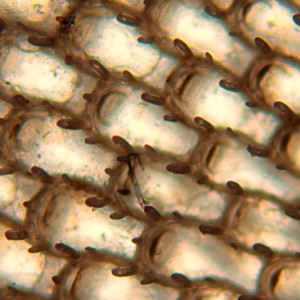Animal, vegetable, or mineral?
Well, the pebbles and sand are clearly mineral. But what of the branching object that has been cast up on the beach? At first glance it looks like a piece of seaweed which would make it vegetable. But it isn't, it is a colony of Flustra foliacea, a tiny animal that belongs to an ancient and primitive Phylum known formally as the Bryozoa or commonly as Moss Animals. Colonies are found in the sub-tidal zone of the ocean where they form bushy colonies with stiff brown or light grey fronds attached firmly to stones and shells by by an encrusting basal portion of the colony. Rather bizarrely fresh colonies have a distinctive smell of lemons!
Each animal within the colony is known as a zooid. The founding zooid (known as the ancestrula) develops into a young colony, and later into an adult colony through asexual budding. Sexually produced embryos are brooded within the adult colony, before larvae are released into the water column. Larvae settle onto the seabed after liberation and metamorphose into an ancestrula, and then go on to found a new colony.t
Like all bryozoans, F. foliacea is a suspension feeder, feeding on small phytoplankton using its ciliated tentacles.
The "extra" is the view down the microscope where you can make out the individual zooids albeit it dead and all dried up after being exposed on the beach.


Comments
Sign in or get an account to comment.


